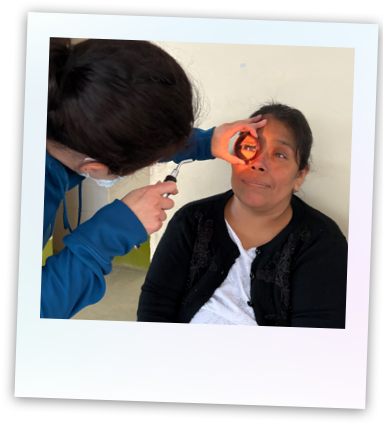Just like the common cold, eye infections can happen to anyone. From shopping carts, door handles, and other everyday items, you can pick up bacteria and germs that can make their way into your eyes. Preventing eye infections takes positive hygiene practices, like using clean towels and washing your face and eyelids daily, to help keep your eyes healthy.
Whether you’ve had conjunctivitis before and want to avoid it again, or you’re a contact lens wearer at greater risk for eye infections, your optometrist can examine your eyes for early signs of infection and offer education to help you avoid common eye care problems.
Symptoms of Eye Infections
Eye infections can be viral, fungal, or bacterial, and the troublesome symptoms can result from several different types of germs that affect distinct parts of the eye. Most eye infections share some common symptoms, including:
- Pain in and around your eye
- A sensation that there’s something in your eye
- Light sensitivity
- Burning sensation
- Painful bumps on or near your lash line
- Tender eyelid
- Overwatering of the eyes
- Irritation in your eyes
The appearance of your eyes may also be affected by infections. You may experience:
- Discharge
- Red or purple eyelids
- Crusty eyelashes and eyelids
Any of these symptoms may signify the presence of an eye infection or other condition. An optometrist can help diagnose the cluster of symptoms and start you on the best course of treatment.
Common Eye Infections
Preventing eye infections before they evolve can save you from painful, irritating symptoms. The most common eye infections impact different parts of the ocular structures, and if you become symptomatic, proper treatment is critical to clear infections and avoid redeveloping the condition.
Conjunctivitis
Conjunctivitis, often called pink eye, is among the most common, highly contagious eye infections. When the conjunctiva, the thin membrane over the eye, is infected, the blood vessels become inflamed, giving your eye a pink or red colour.
Typically, most cases of conjunctivitis are either bacterial or viral. Bacterial conjunctivitis occurs when germs enter your eye from touching your eyes, sharing makeup brushes, or coming into contact with someone with conjunctivitis.
Common cold viruses can cause viral conjunctivitis. Close contact with those suffering from upper respiratory infections can pass it on, manifesting as conjunctivitis. If you have a cold, you may push the infection from your respiratory system into your eyes by blowing your nose too forcefully.
Children are more at risk for bacterial conjunctivitis. Whenever they touch a classroom desk, doorknobs, or stair railings at home and in public, they introduce germs into their eyes, making them more likely to get conjunctivitis.
Keratitis
Keratitis occurs when the cornea, the transparent dome on the eye’s surface, is infected. This type of infection is more common among contact lens wearers than those who wear only glasses.
Bacteria, fungi, or viruses can cause keratitis but can sometimes be non-infectious, caused by a corneal abrasion, exposure to intense sunlight, or a warm climate.
For contact lens wearers, risks for developing keratitis include:
- Overnight wear
- Using a non-sterile contact case
- Not properly disinfecting your contact lenses
- Exposing contact lenses to water
- Using expired or contaminated contact solution
- Topping off contact lens solution rather than replacing
Blepharitis
When the glands in your eyelashes become blocked, it can trigger blepharitis or eyelid inflammation. Your lashes are meant to keep debris and particles from entering the eye, but the follicles can become irritated by a bacterial infection.
Inflammation can occur on the inside edge of the lash line, known as posterior inflammation, often due to a dysfunctional oil gland. If the irritation is on the outside edge of the lash line, referred to as anterior inflammation, it may result from skin irritation, such as dandruff.
Uveitis
Uveitis is inflammation in the middle layer of your eye, the uvea. The uvea has 3 parts: the iris, the ciliary body, and the choroid. Certain viruses, but more often autoimmune conditions, can cause the infection, such as rheumatoid arthritis, multiple sclerosis, or lupus.
Different types of uveitis affect specific structures of the eye, such as:
- Anterior uveitis, which affects the iris
- Intermediate uveitis, which affects the vitreous, or fluid that fills the eye
- Posterior uveitis, which affects the choroid and retina at the back of the eye
- Panuveitis affects the entire uvea

Preventing Eye Infections
When you develop an eye infection, your optometrist will treat the virus, bacteria, or fungi after making a diagnosis. Treatment typically includes antibiotics, antivirals, antihistamines, eye drops or artificial tears, and warm and cold compresses.
The best way to avoid developing and passing along infections is to take preventative measures to keep your eyes healthy.
To help prevent viral and bacterial infections:
- Don’t touch your face or eyes with dirty hands
- Wash your hands and use hand sanitizer
- Wash your face and eyelids daily
- Use clean towels and tissues
- Don’t share makeup, cosmetics, or brushes
- Wash your bed sheets and pillowcases weekly
- Practice good contact lens hygiene
- Clean your glasses frames and lenses often
- Replace objects that come into contact with an infected eye
Get the Care Your Eyes Deserve in Airdrie
Regular eye exams are an important part of your eye care health If you’re due for your next comprehensive eye exam, book an appointment with Airdrie Family Eye Doctors to help maintain sharp vision and the well-being of your eyes.

























